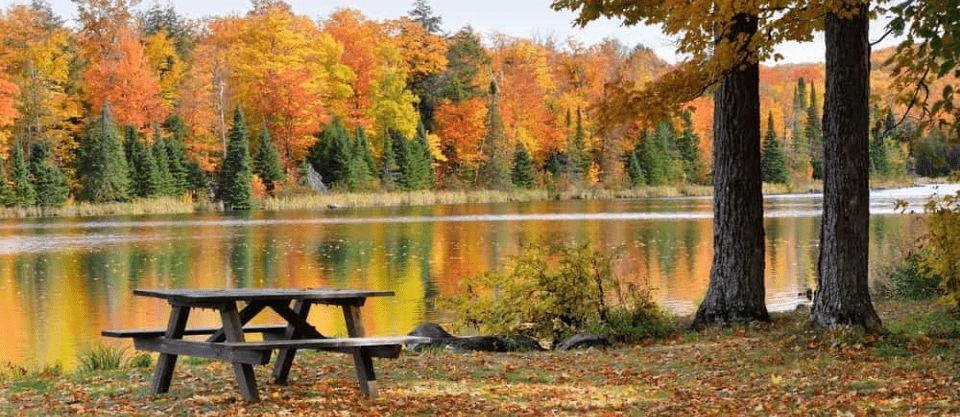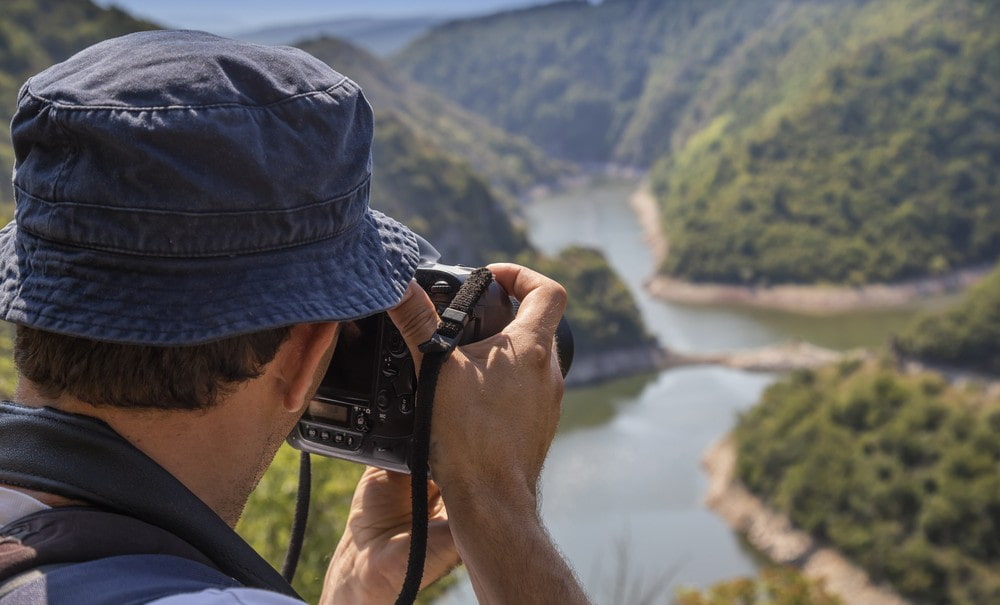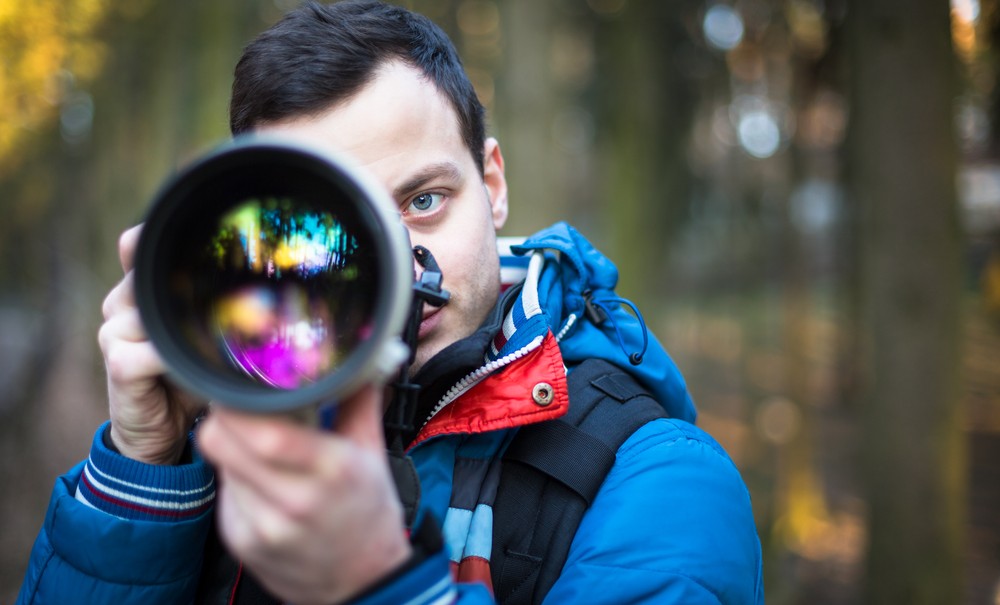
The Best Lenses for Landscape Photography
Capturing an entire vista is a worth and enjoyable photography challenge, but what are the best lenses for landscape photography? Most beginners assume they’ll just need a wide angle lens to capture landscapes. While a wide angle lens certainly has a large place in landscape photography, having a few different lenses at your disposal will get you a variety of different shots and help step up your composition. So what are the best lenses for landscape photography? Here are a few of our top recommendations.
A Note on ApertureThe best most expensive lenses allow photographers to use wide apertures of f/2 or even wider. These are great lenses and they come in handy for creating soft backgrounds and shooting in low light. But most of the time, landscapes are shot with wide apertures. If landscape is pretty much all you do, you can save some cash by picking up a lens that doesn’t go quite as wide—since landscapes aren’t shot wide anyways. However if you shoot landscapes and also snap portraits or photos indoors, you’ll get more mileage out of a single lens if you purchase the version that has a wide maximum aperture, or low f-number.
Ultra-Wide & Wide angle
 Wide angle lenses capture the entire scene, including more of the view in the shot. It’s a popular lens option for landscape photographers, and for good reason. Wide angles snap extensive views. Be careful though, too wide and you’ll get a fisheye effect, where the image distorts at the edges—that usually occurs at 18mm or lower. The best landscape lenses include the ultra-wide perspective and wide in one, for more versatility when you compose your shot. If you can only afford one lens for landscape photography, make it a good wide angle lens. Other lenses certainly have their place in landscape photography, but if you are limited to one, make it a wide angle. Here’s the best wide angle lenses for landscapes:
Wide angle lenses capture the entire scene, including more of the view in the shot. It’s a popular lens option for landscape photographers, and for good reason. Wide angles snap extensive views. Be careful though, too wide and you’ll get a fisheye effect, where the image distorts at the edges—that usually occurs at 18mm or lower. The best landscape lenses include the ultra-wide perspective and wide in one, for more versatility when you compose your shot. If you can only afford one lens for landscape photography, make it a good wide angle lens. Other lenses certainly have their place in landscape photography, but if you are limited to one, make it a wide angle. Here’s the best wide angle lenses for landscapes:
- The Nikon AF-S FX Nikkor 14-24mm f/2.8 lens is a top-of-the-line wide angle for Nikon shooters. The zoom range allows you to choose the best focal length for your particular scene and the wide aperture makes it a versatile lens for other uses too.
- The Canon EF-S 15-85mm f/3.5-5.6 isn’t quite as bright, but again, you don’t need those super wide apertures for landscapes. It’s got a great zoom range, starting with the superwide 15 mm and extended out to the 85mm standard range, so it covers quite a bit of ground. It’s sharp and captures solid images, but it’s not too heavy to carry around either.
- The Tamron 10-24mm f/3.5-4.5 lens is an excellent budget option. It covers a nice wide range and you can find it for about $500. There’s a version to fit Nikon, Canon, Pentax and Sony DSLRs.
Standard lenses capture scenes close to how the human eye sees them, around 50mm. They’re good for shooting scenes where you may need to crop out something distracting to really focus on the landscape, or for focusing more on the details. A “nifty fifty” or a fixed 50mm f/1.8 lens is great to add if you shoot other types of photos, or if you’re really just about landscape photography, you can look at a zoom to get more composition options when it’s impossible to get closer or farther away. Here’s the best standard lenses for landscapes: The Nikon AF-S FX Nikkor 24-70mm f/2.8 lens is an excellent zoom lens that can be used for photographing a wide variety of subjects, including landscapes. It’s expensive, but the zoom range touches the edge of the wide angle option and heads right into the standards, so you don’t need to buy or carry two lenses.
- The Canon EF 24-70mm f/2.8L II lens is a great lens if you shoot Canon. Again, it covers a range from wide to standard and has a nice wide aperture for photographing other subjects too.
- The Nikon 50mm f/1.8 lens doesn’t have any zoom, but it’s budget friendly and snaps solid images. It’s got that wide aperture to use for other subjects too.
- The Canon EF 50mm f/1.8 STM lens is just a little over $100, but captures some pretty sharp shots. Again, there’s no zoom, but that’s how you get a price so low with an f/1.8 aperture.
Telephoto
 While less commonly used for landscape photography, telephoto lenses (85-200mm) certainly have their place. Sometimes, the landscape prevents you from getting in close to that waterfall, or you simply want to show more of the details in the scene. A telephoto will do that by getting you up closer. Telephoto lenses tend to be more expensive, but since you don’t need that super wider aperture, you don’t have to get the most expensive telephoto on the market. Here are the best telephoto lenses for landscapes: The Nikon 70-200mm f/4G ED VR lens is lightweight compared to many of the other telephotos on the market. It covers a wide range, so you could potentially just pair it with a wide angle zoom and not have to purchase a third lens. While it doesn’t have that super wide aperture, it’s great for landscapes and snaps sharp shots.
While less commonly used for landscape photography, telephoto lenses (85-200mm) certainly have their place. Sometimes, the landscape prevents you from getting in close to that waterfall, or you simply want to show more of the details in the scene. A telephoto will do that by getting you up closer. Telephoto lenses tend to be more expensive, but since you don’t need that super wider aperture, you don’t have to get the most expensive telephoto on the market. Here are the best telephoto lenses for landscapes: The Nikon 70-200mm f/4G ED VR lens is lightweight compared to many of the other telephotos on the market. It covers a wide range, so you could potentially just pair it with a wide angle zoom and not have to purchase a third lens. While it doesn’t have that super wide aperture, it’s great for landscapes and snaps sharp shots.
- The Canon EF 70-200mm f/4 IS USM lens covers a good range without getting too heavy. It doesn’t have the brightest aperture, but it’s also more affordable and works well for landscapes that you want to bring in closer. While a wide angle lens should be the first one you add to your kit for landscape photography, your composition and variety will improve if you also work with a standard and telephoto range. Thankfully, you don’t need the best, brightest lenses for landscapes—you’ll be shooting with a narrow aperture and a tripod in most instances anyway, though it’s a good idea to opt for the faster option to use with other subjects. Look to create a kit that will cover wide, standard and telephoto angles to give you the ability to creatively capture the scene. Learn more on lenses for landscape photography from the expert at Upskillist. Register for Photography course today!



